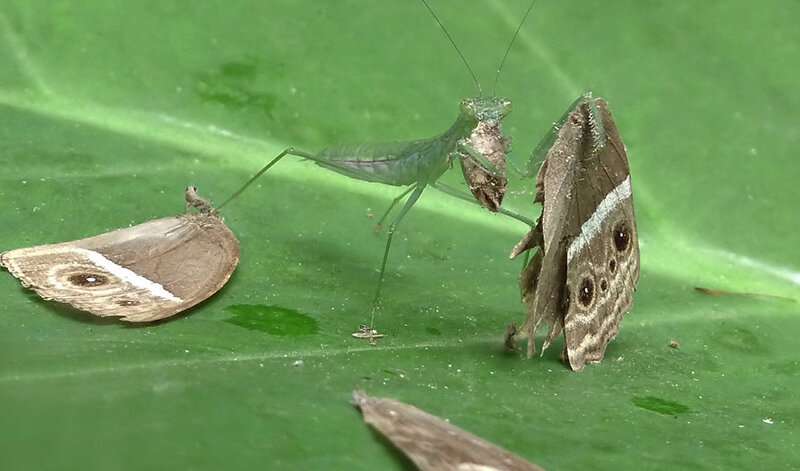Credit: University of Oregon
When species compete for limited resources, structures in their environment can be the difference between coexistence or one eliminating another. Relationships between species also are important, according to new research by University of Oregon scientists.
Scientists have suspected a deep relationship between biodiversity and physical structure of the environment, but nailing it down has been elusive.
The UO's Tristan Ursell and Nick Lowery have revealed part of that relationship by crunching mathematically rich formulas in thousands of supercomputer simulations across multiple scenarios. In the research, they focused on the influences of physical structures, such as packed particles in soil and epithelial cells in the mammalian gut, on the survival of species living in those environments.
Their findings are in a paper focusing on the dynamics and stability of ecological communities in the Proceedings of the National Academy of Sciences.
The accomplishment puts on firm footing physical conditions that contribute to the biodiversity seen in nature. It also shows a possible route around competitive exclusion, a concept that argues that two species battling for the same resources cannot stably coexist in an ecosystem unless they adopt different characteristics or strategies to reduce competition. The term was coined in 1932 by Soviet biologist Georgii Gause.
"This research addresses a longstanding question," Ursell said. "If on the one hand competitive exclusion pushes a system to have a single dominant species, why do some environments have thousands of species coexisting in a limited environment? We offer a possible explanation that says it is the structure of the environment that allows that to be true."
As the research continues, new design principles for a variety of devices, including medical implants, may emerge, said Ursell, a professor of physics and member of the UO's Institute of Molecular Biology and Materials Science Institute.
"Let's say you want to build a device that houses groups of different microbial species together. Our work suggests that one way to do that is to design variations in the physical structure that stabilize coexistence of those species," Ursell said. "For instance, you might want evenly matched competitors. Structural modifications of the environment can help you do that. With such a device, you could push the ecology of the system in a desired direction."
A possibility is an implant built to interact with a person's gut microbiome and ensure a healthy and stable balance of microbes, said Ursell, who is a member of the UO's META Center for Systems Biology, where scientists are seeking to understand such host-microbe systems and their role in human health.
The computer modeling was based on mathematical formulas long used to study predator-prey relationships. In this case, however, Ursell and Lowery, a postdoctoral researcher in the Institute of Molecular Biology, ran thousands of simulations. They modified the structure of the physical environment in each simulation and then measured ecosystem stability through time.
That let them explore relationships between population dynamics and spatial structures that occur in natural environments, like soils or the mammalian gut. In both two- and three-species systems, structures in the environment altered the competitive dynamics, but in different ways. First, they looked at two competing species and found that structure localized interactions so that coexistence was stable over time.
That type of change in the competitive landscape, he said, is not unlike how military forts in historical times effectively altered the interface of a conflict and allowed two competing groups to coexist, as long as a fort remained standing.
"There is an interplay between the competitive strength of the species and the physical structures in a given environment," Ursell said. "When competition between species is unbalanced, the structure matters a lot for providing stability. Structure matters, and that has not been characterized (before)."
They also looked at three species competing by the rules of the children's game rock-paper-scissors. Structure had a destabilizing effect, leading to a single dominant species.
Consider, he said, a scenario where species A can attack and kill species B, but species B cannot attack A. Species B can kill species C, which, in turn, can attack and kill species A. In the absence of spatial structure, a cycle ensues that allows all species to survive.
However, by introducing spatial structure, he said, that cycle was disrupted, destabilizing the entire system.
"Together, these findings strongly suggest that the physical structure of the environment can interact significantly with the specific nature of interspecies interactions within resident communities to affect stability and dynamics, and more generally indicate that physical attributes of the environment must be considered when assessing the stability of resident communities," Ursell and Lowery concluded in their paper.
More information: Nick Vallespir Lowery et al. Structured environments fundamentally alter dynamics and stability of ecological communities, Proceedings of the National Academy of Sciences (2018). DOI: 10.1073/pnas.1811887116
Journal information: Proceedings of the National Academy of Sciences
Provided by University of Oregon
























